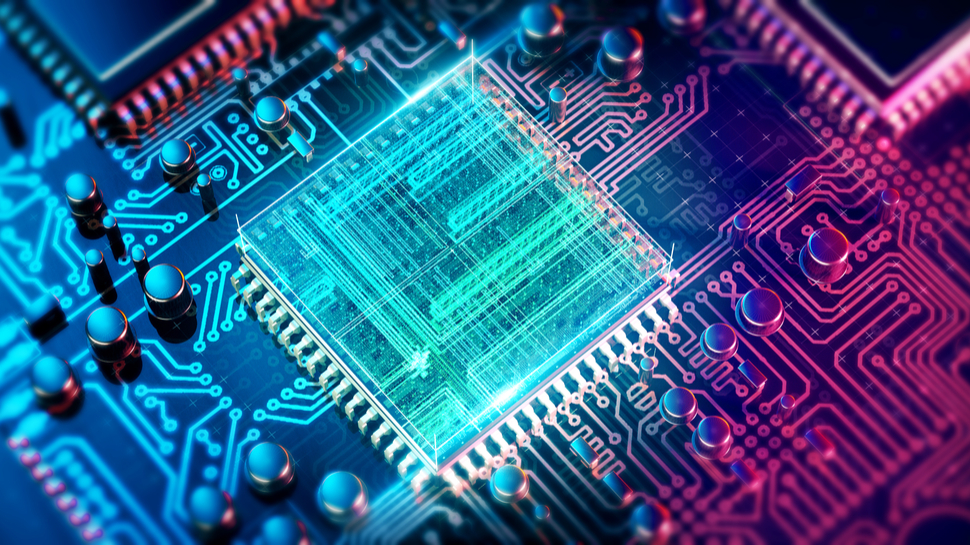What’s next to enable a ‘quantum-ready’ economy?
Quantum Key Distribution crucial to a secure quantum internet

The arrival of commercial quantum computing promises substantial opportunity for growth and is driving major investment as governments across Europe and the world strive to make their economies ‘quantum-ready’. The UK, for example, built its first quantum computer last year while also unveiling the national quantum computing center, due to open in 2023 and intended to be a world-class facility which places the country at the forefront of quantum computing. Elsewhere, Germany has committed €2 billion of Covid-recovery funding into quantum technologies – supplementing wider EU plans to put a further €1 billion into the technology between now and 2028.
Andrew Shields is Head of Quantum Technology at Toshiba Europe.
Certainly, quantum computers offer an unparalleled opportunity given their power. But, simply put, this same potential brings with it a cybersecurity threat which makes the technology unviable without a way of securing the quantum threat. That is, according to Bruno Huttner, Director of Strategic Quantum Initiatives for ID Quantique, that it “is basically going to destroy the security of networks as we know them today."
QKD – negating the quantum threat
Fortunately, though, the solution to negating the quantum threat is already here. With multiple milestones achieved over the past few months demonstrating its commercial viability, the arrival of Quantum Key Distribution (QKD) is key to the realization of the quantum economy – not least because it provides the next-level of security required to safely unlock the potential of quantum computing.
Unlike conventional public key encryption, whose security depends on the inability of classical computers to solve complex mathematical problems within a practical timeframe, QKD’s security is guaranteed by fundamental and unavoidable physical laws. By harnessing the inherent unpredictability in the state of particles, like electrons or photons, QKD can be used to generate the random numbers needed for cryptographic applications. Furthermore, by sending streams of encoded single photons through an optical communication network, it is possible to share a secret digital key that can be used for encrypting or authenticating information. Combined with quantum resistant algorithms, this means that QKD is not only secure from today’s eavesdropping attacks, but all future ones as well.
However, not all QKD solutions are the same, and there have been major barriers to adoption until recently due to cost and infrastructural requirements. Toshiba, however, has created what could be the tipping point in the adoption of the technology through its multiplexing solution. Conventional QKD systems require separate fiber channels for key distribution and data, making them both more complex and more expensive to implement using dark fiber. Multiplexing QKD, by contrast, allows for both the control channel and quantum channel to be transmitted on one fiber. This is an absolutely crucial development - essentially doubling network capacity and halving the cost of deployment in one fell swoop.
At the same time as multiplexed QKD makes quantum cryptography a commercial reality, so too does Active Stabilization technology ensure the viability of multiplexing itself by allowing the system to distribute key material continuously, in even the most challenging operating conditions, and without any user intervention. This avoids the need for recalibration of the system due to temperature-induced changes in the fiber lengths. To date, QKD has been a technology that delivers high levels of certainty about secure key exchange; with multiplexing, for the first time that certainty becomes commercially accessible for organizations as a simple carrier service.
A real-world commercial reality
We’re already seeing QKD in play in real-world environments across the globe. In 2020, the US Quantum Xchange (QXC) Phio network was used to transfer trading algorithms, customer settlement accounts for large banks, and even secure video streams across a 32km network link from Wall Street in New York to New Jersey. In Japan, Toshiba’s QKD was used to secure the world’s first quantum cryptography transfer of sensitive genomic medical data in a trial conducted in conjunction with Tohoku Medical Megabank Organization at Tohoku University (ToMMo). And here in Europe, the UK’s first industrial deployment of a quantum-secure network is transmitting sensitive data at high-speed over 6km of fiber optic cable between the National Composites Centre (NCC) and the Centre for Modelling and Simulation (CFMS) – two Bristol-based smart production facilities central to UK industry.
Are you a pro? Subscribe to our newsletter
Sign up to the TechRadar Pro newsletter to get all the top news, opinion, features and guidance your business needs to succeed!
After decades of fundamental research, QKD is now economically viable for commercial carrier networks through the multiplexing breakthroughs described above. Aided by public testbeds such as Europe’s OpenQKD project, research is also underway on the next generation of QKD, designed with the aim of driving down costs and further increasing performance.
Investment is happening at a global level and increasing all the time, underlining the strides being made towards an economy underwritten by advances in quantum technology. It is not yet a world today’s network engineers are fully familiar with, but it is also not completely alien. In QKD, the first stage of the quantum era is already available to use, an integral step in enabling both organizations and governments to benefit from the potential of quantum computing.
- We feature the best cloud computing services.
Andrew Shields is Head of Quantum Technology at Toshiba Europe.